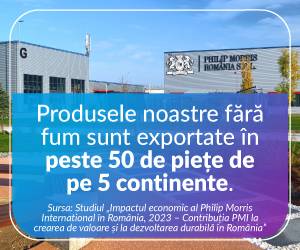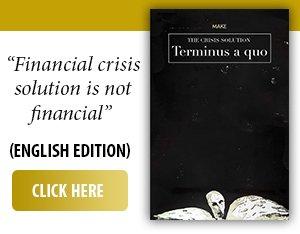
With help from OECD, Romania has prepared a lengthy 80-page National Capital Market Development Strategy 2022-2026, which was recently published.
The document includes an assessment of the current Romanian capital market - underdeveloped - and a series of detailed measures aimed at accelerating its development.
Are these sufficient? Are they likely to work?
• Romania's Situation
Romania is typical of "frontier markets" or early-stage emerging markets, as illustrated in the charts below.
The first chart shows the relationship between Equity Market Capitalization / GDP vs GDP/Capita.
As countries get richer, and GDP/capita increases, savings increase, institutional investment (mutual funds, pension funds, insurance) and retail investment grow. Consequently, Market Capitalization/GDP increases. The richer, more developed markets also tend to have listed derivatives markets.
Relative to its GDP /capita of around US$12,800, Romania's ratio of Market Capitalization/GDP is very low.

Note - Blue dot: presence of listed derivatives market, Red dot: lack of listed derivatives market
The second chart below illustrates the relationship among market liquidity, measured as the "turnover ratio" of Volume Traded/Market Capitalization. The Romanian market has low liquidity, with a turnover ratio below 7%. Note that listed derivatives markets, the blue dots, tend to be associated with stock markets that already have healthy liquidity.

Romania's capital market seems to be "stuck" - small size relative to the economy and limited liquidity. It is a vicious circle: low liquidity does not encourage new listings; there are only a handful of active stocks, investors are not excited, new money does not come into the market and the market stagnates.
What needs to be done to stimulate and develop the market? How could Romania's capital markets become more vibrant and active, like Poland or Hungary for instance?
• The New Strategy
The new strategy proposes measures which fall into several categories or "objectives"
1.Stock market listings: facilitate and simplify them
2.Market liquidity: stimulate it by offering online quantitative research (BVB already has launched such a service), creating a listed derivatives market (Romania's previous derivatives market SIBEX, failed), introducing securities lending
3.Small and Medium Enterprises: create an active market for SME stocks (the AeRO market already exists but is inactive)
4.Retail Investors: stimulate retail savings and organize campaigns to encourage investment in the stock market
5.Institutional Investors - simplify the legal framework of mutual funds and pension funds, encourage creation of "occupational pension funds" (e.g. IT workers, auto workers , agricultural workers)
6.Long-term Fixed Income Financing - encourage the issue of long-term corporate bonds and infrastructure bonds
7.Digital transformation - introduce new « distributed ledger technologies » in market institutions
8.Private Equity - simplify the legal framework
9.Green Investments - encourage green investment
Many of the themes included in the strategy are repetitions of topics already present in the BVB presentations of 2012, 2013 and 2016 (see BVB web site)
The strategy reads like a checklist of standard "best practices".
Many of these have already been tried but without any clear success.
Each of the points seems valid but are they enough to change Romanian capital markets?.
• What International Experiences Suggest
I have had the privilege of advising stock exchanges and capital markets regulators in several emerging markets on strategies for the development of national capital markets. Over some 20-30 years of experience, I have seen many examples of success and failure.
Back-to-basics: capital markets everywhere are driven by greed and fear. They will go up and down. But, to survive and thrive, capital markets need trust in the institutions.
Brazil offers an interesting case study. In the mid-1980s, when I started to work in Brazil, the stock market was the Wild West. There were lots of cases of market manipulation (the Rio de Janeiro Stock Exchange was destroyed by such an event in 1989, and the market moved to Sao Paulo), insider trading, and abuses of minority shareholders. Brazil was living with high inflation, devaluation, real interest rates were high, and the stock market was in bad shape. Retail investors had practically disappeared, and institutional investors favored fixed income instruments, mostly government bonds and bank deposits. The Brazilian securities regulator, the Commisao de Valores Mobilarias (CMV) had a poor reputation. In the mid-1990s, Brazil managed to control inflation and stabilize the currency. A good period began, with privatizations and the growth of a few world-class companies - in mining, oil, agribusiness, telecoms, aeronautics. Interest rates declined to more reasonable levels. The stock market boomed. There was a thorough reform of the regulator, CVM , which became highly professional. Misbehavior in financial markets started to be punished: Brazil is one of the few countries where several top financiers, who were found guilty of market manipulation actually went to jail.
The Brazilian market is now one of the most sophisticated and liquid capital markets of the world. Brazil also has one of the most sophisticated listed derivatives markets, in many ways superior to the US and European models.
Over a 30+ years period, Brazil has created a vibrant capital market, with strong local institutional investors, a large and growing number of retail investors and a strong base of foreign investors. People now trust the Brazilian capital markets.
Chile, a smaller country (in many ways comparable to Romania) also offers some interesting lessons.
In the early 1980s, Chile was in a very difficult situation and had defaulted on its debt. The government was broke and so was the government pension system. Chile began a long process of economic recovery, including privatizations and the pioneering introduction of a very strong system of funded pension plans (known as AFPs, Administradoras de Fondos de Pensiones). Over time, these pension funds became the lead investors in the stock market and drove sustained stock market growth.
Chile has also benefitted from the presence of very strong and rigorous securities, banking and pension regulators. Chilean regulators have consistently been among the toughest regulators in emerging markets and the Chilean investors trust the system.
What should Romania do?
To grow healthy national capital markets, you need several key ingredients: some economic optimism/growth, and basic trust in market institutions.
Apart from the COVID-related slump, Romania "s economy has been performing reasonably well, with GDP growth rates of 4-5% in recent years. There was therefore room for some optimism, at least until the Ukraine crisis.
However, there is little trust in the market and the marketplace institutions.
In Romania, too many people - both businesses and investors feel the stock market is a rigged game which only benefits insiders.
Every capital market has had some financial scandals. The challenge is to react quickly and forcefully to financial scandals and conflicts of interest, investigate them thoroughly and hold the guilty parties accountable, in a very visible way.
This should be a top priority for Romania's capital markets and a key element of the development strategy.























































